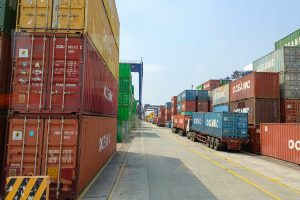Boards and managing agents for New York City cooperatives and condominium associations have two major financial challenges: staff and building maintenance. In this post, we will cover how to manage construction costs during rising costs, reduced supply chain reliability and constrained economic conditions.
The Trump Administration has announced its intention to impose tariffs on goods and products imported into the United States, including those from Canada, Mexico and China. Because the United States imports significant amounts of construction materials, including steel, plywood, softwoods, petroleum products, aluminum and cement from these three countries, as well as from South Korea and Germany, the construction industry is sensitive to tariffs.
Experts anticipate the current tariffs will generate $3 billion to $4 billion in revenue. This represents barely 10% of the overall revenue collected under the Federal Income Tax ($2.6 trillion) and employment taxes ($2.2 trillion). Thus, the administration’s plan to rely on tariffs in lieu of federal income and employment taxes seems a distant dream.
The impact of these tariffs on construction is estimated to increase costs by 5% and reduce the overall supply chain reliability. The reduced supply chain reliability will, in turn, further increase costs. As an aside, the Trump Administration’s policy of accelerating the deportation of undocumented workers will reduce the construction labor force.
The best estimates are that 20% to 25% of the construction workforce is undocumented. The deportations of these undocumented construction workers will further delay projects and increase costs.
Since the election, the pace of construction work and spending has been gradually slowing. Whether Department of Government Efficiency (DOGE)-related spending reductions will support this trend will not be known for certain until March or April 2025; however, some additional slowing in the construction sector should be expected.
In the face of these headwinds, boards and managing agents need to plan for construction projects. All buildings should have short-, medium-and long-term plans for capital maintenance. This will allow maintenance to be spread over time and ensure critical maintenance work is done before components are damaged or operating costs are adversely impacted.
The planning process should consider direct procurement of long lead items, multiple sources of materials, multiple or interchangeable color schemes, contract clauses that limit escalation to direct material costs only, no markup and conservative management of construction funds.
Direct procurement of long-lead items has been a favored tactic of late. It requires the design team to fully specify major equipment like boilers, hot water heaters, elevators or major valves. The board will place the order for the item, make payment and take delivery of the equipment. This has two advantages: the board knows when the major equipment will be delivered and is assured that payment reaches the manufacturer. This not only makes for reliable delivery but also protects the warranty.
Diversified material sources and options are also popular. In this scenario, the design professionals will approve multiple sources of materials such as drywall, paint, ceiling tiles, carpeting or flooring. If one carpet color is unavailable, the contractor may shift to a different, approved color and change the paint and wall coverings to match. This has been an excellent strategy in cosmetic projects where the overall need is for a unified look. Likewise, the contractor may purchase materials from different manufacturers of common items like drywall if necessary. Hardware shortages are handled by selecting readily available hardware from a pre-approved list.
Some contractors will seek escalation clauses for increases in material costs. Boards and managing agents should limit the escalation to the bare cost of the material, no additional overhead or profit should be allowed since there is no additional work or risk involved, just a material price increase.
Finally, boards and managing agents must budget projects accurately and leave themselves with a margin or contingency to cover the unexpected. The design professionals and contractors involved need not know that the board has contingency funds. That is only revealed when necessary and only to the extent required.
This column presents a general discussion. This column does not provide legal advice.
Carol A. Sigmond
Partner
Greenspoon Marder LLP
1345 Avenue of the Americas, Suite 2200
New York, NY 10105
carol.sigmond@gmlaw.com
(212)524-5074






















